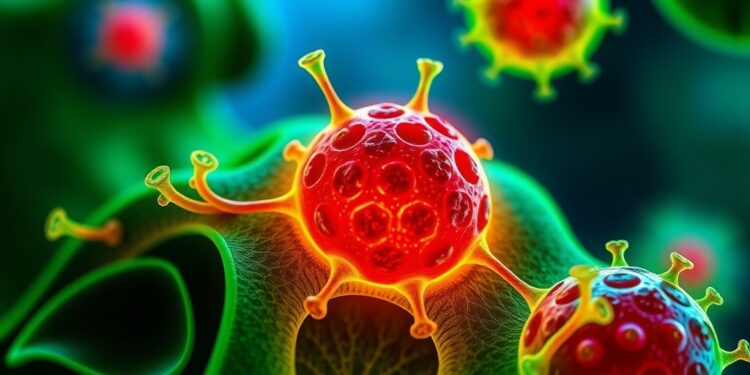In a significant advancement in the field of stem cell biology, a collaborative research initiative directed by Dr. Yang Yang and Dr. Xi Wang at Nanjing Medical University has achieved an extraordinary breakthrough. Published in the prestigious journal Science China Life Sciences, the study underscores the immense potential of Pladienolide B (PlaB) as a pivotal agent in reprogramming mouse embryonic stem cells (mESCs) into a new class of stem cells referred to as transient totipotent blastomere-like stem cells (tTBLCs). This innovative research shifts the paradigm in how we understand cellular reprogramming and totipotency, broadening the horizons of regenerative medicine.
The essence of this groundbreaking research lies in the remarkable properties of tTBLCs, which emerge from a brief but intense exposure to Pladienolide B. Specifically, the study reported that a short-term treatment lasting only 6 hours with a concentration of 20 nM PlaB catalyzed the activation of crucial genes associated with totipotency in mESCs. Crucially, this reprogramming occurred while the pluripotent gene expression remained intact. The resultant tTBLCs exhibit a metastable totipotent-like state characterized by an expansive lineage potential, allowing them to differentiate into a variety of cell types beyond their initial specification.
The capability of tTBLCs to self-organize into structures resembling early-stage embryonic development is particularly noteworthy. The cells can autonomously form intricate three-dimensional blastoids that closely mimic the spatial arrangement and cellular composition of natural pre-implantation embryos. These blastoids are composed of all three fundamental lineages: trophectoderm, epiblast, and primitive endoderm, thereby reflecting the cellular diversity akin to that of a native blastocyst. This mimicry offers a powerful model for studying early embryonic development and cell lineage specification.
Moreover, the blastoids derived from tTBLCs exhibit an extended developmental competence, advancing to structures similar to post-implantation egg cylinders both in vitro and in vivo. Although the developmental efficiency of tTBLC-derived blastoids is not yet on par with natural embryos, the capacity of these cells to model peri-implantation events represents a significant milestone in developmental biology. The study highlights the unique potential of tTBLCs for exploring various mechanisms underlying early embryonic development and highlighting potential gaps in our understanding of stem cell differentiation pathways.
In an analysis of the transcriptome of both tTBLCs and the resulting blastoids, researchers noted significant transcriptional parallels with mouse blastocysts around the embryonic days E3.5 to E4.5. This indicated a pronounced enrichment in markers specific to the trophoblast lineage, positioning tTBLCs as a promising in vitro platform for investigating early trophoblast specification and the mechanisms that drive placental development. Such insights could have far-reaching implications for developmental biology and reproductive health.
The introduction of tTBLCs as a new type of stem cell lays the groundwork for a broad spectrum of applications in regenerative medicine. These cells not only enhance our understanding of totipotency—the unique ability of some cells to differentiate into any cell type within an organism—but also stand poised to advance research into cellular maturation, differentiation, and the intricacies of early embryonic development. Furthermore, the chemically defined approach to generating tTBLCs through transient pharmacological modulation opens new avenues for high-throughput screening methods, potentially revolutionizing how we assess developmental toxicity and the safety of therapeutic interventions.
This pioneering work exemplifies the potential for chemical agents like Pladienolide B to influence cellular states and development processes, setting the stage for innovative therapeutic strategies. It could lead to significant advancements in areas such as stem cell therapies for degenerative diseases, organ regeneration, and even infertility treatments. In addition, these findings contribute to a growing body of literature documenting the importance of pharmacological agents in stem cell research and cellular reprogramming.
The implications of this study extend far beyond the laboratory; they touch upon ethical considerations regarding stem cell research and the future of human health. Researchers must navigate these complexities, assessing the potential of such technologies while remaining vigilant about the ethical dimensions of manipulating embryonic development. As we venture further into the intricacies of cellular biology, the insights gained from this study will undoubtedly inform future research directions and biotechnological applications.
In conclusion, the work conducted by Dr. Yang, Dr. Wang, and their team heralds a new era in stem cell research, empowering scientists to unlock new dimensions of cellular potential. As we continue to unravel the complexities of totipotency and embryogenesis, the introduction of tTBLCs into the scientific lexicon presents transformative opportunities that could shape the landscape of regenerative medicine and developmental biology for years to come. The pathway of discovery illuminated by this research underscores the ongoing journey toward harnessing the power of stem cells for therapeutic innovation and enhancement of human health.
The findings represent a comprehensive study on the intricate dynamics of stem cell biology, emphasizing how transient pharmacological interventions could redefine what is possible in the realm of human development and regenerative therapeutics.
Subject of Research: Stem Cell Biology
Article Title: Groundbreaking Study Reveals New Class of Totipotent Stem Cells
News Publication Date: October 2023
Web References: DOI
References: Science China Life Sciences
Image Credits: Not applicable
Keywords: Stem cells, totipotency, Pladienolide B, transient totipotent blastomere-like stem cells, embryonic development, regenerative medicine, cellular reprogramming, blastoids, early embryonic development, trophoblast specification, placental development.




